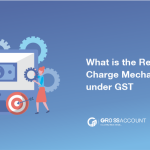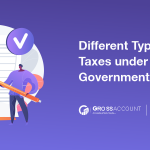Introduction
India has accepted the de-centralised governance system. Two governments are ruling under the constitution. It is the Central government and State government. However, the Tax imposition is in the union list under the Constitution of India. So, any tax that is levied, collect or changed is done by the central government. There are different tax structures available for different consumers. And different Type of Taxes .
Union Budget 2023 levied different tax structures for taxpayers. The major advantage of the new tax structure is that no tax will be counted under 7 lac income.
Also Read: Union Budget 2023: Key Takeaways on Tax and GST Proposals
As per the recent data for the financial year 2022/23, the Indian government’s most of income come from taxes. There are different types of tax levied by the central government. Taxes are an important part of any government to run. It provides essential services and infrastructure for the nation’s growth and development. These taxes are crucial for financing public expenditures, social welfare programs, defence, and other essential functions.
In this blog, we will cover the different types of taxes levied by the central government in India. Here is the list of some taxes.
Major Types of Taxes under Central Government
Generally, there are two main parts of the taxes.
Direct Tax
These are the tax that is levied on an individual basis. And it is directly payable to the government. It is imposed on the income of a person and paid by the same person. It helps in reducing Inflation. (To understand that you need information on deep economy aspects). It can not be shifted to others.
- Income Tax
- Corporate Tax
- Wealth Tax
- Capital Gain Tax
- Securities Transaction Tax
- Gift Tax

Indirect Tax
If a Tax is levied on the goods or services of a person and collected by the central government called Indirect Tax. It is imposed on the sellers but collected from the consumers. Indirect Tax is not helpful in Inflation. It can be shifted to others.
- Sales tax
- VAT (Value Added Tax)
- GST (Goods and Service Tax)
- Excise Duty
- Toll Tax

Other Taxes
However, some taxes do not include direct or indirect taxes. Here are some examples. Property Tax, Registration Fees, Toll Tax, Education Cess, Entertainment Tax, and Professional Tax.
Sub Types of Taxes
Income Tax
Income tax is one of the most significant sources of revenue for the central government. It is a direct tax imposed on the income earned by individuals, corporations, and other entities. The Income Tax is imposed under the Income Tax Act, of 1961. The tax is levied on various sources of income. It includes salaries, business profits, capital gains, and more. The rates and slabs for income tax differ on the individual’s level of income.
Moreover, as per the union budget 2023, the new income tax regime is imposed in the economic system. In the new tax regime, if a person has a lower income than 7 lakhs then a person uses their money as tax-free. However, if a person has more than 7 lakh income then a person can choose whether he/she gonna remain in the old tax structure or want to go in the new tax structure.
Corporate Tax
Corporate tax is another crucial source of revenue for the central government. It is levied on the profits earned by companies operating within the country. The corporate tax rate can be varied based on the size and type of company, and it plays a significant role in encouraging investments and business growth.
Capital Gain Tax
There are two parts to this tax.
1) Short-Term Capital Gain Tax
Short-term capital gain tax is levied on the gains that are sold within 36 months or less.
Example: If a person buys one asset and suddenly the price of that asset rises from the ground. However, if a person wants to sell the asset within 36 months of the period then the Short-term capital gain tax levied on a particular asset.
2) Long-Term Capital Gain Tax
Long-term capital gain tax is levied on the gains that are sold after 36 months.
Currently, there is no wealth tax levied on the property. The government abolished it in 2015. Instead of the wealth tax government implemented the surcharges of up to 2 to 12 per cent. It mainly focuses on the upper class (rich class)people whose income is more than 1 crore.
Securities Transaction Tax (STT):
Securities Transaction tax is levied on the purchase or sale of securities such as shares and mutual fund units in the Indian stock markets. It is aimed at discouraging speculative trading and generating revenue from stock market transactions.
Gift Tax
If a person receives a gift that values more than 50,000/ rupees per year. However, the government levied a 30% tax on the total value. Gift Tax varies for different gifts. If a received gift is in the form of cash, cheque or bank transfer and its value is more than 50k then the sum of money received as a gift. If an asset or property is an immovable property like land or buildings, and the stamp duty exempts more than 50k then, Tax is levied on the entire stamp duty.
Goods and Services Tax (GST)
GST is one of the most transformative tax reforms in India. It replaced a complex web of indirect taxes. GST is introduced in July 2016 with the 101st constitutional amendment act. It is a consumption-based tax levied on the supply of goods and services across the country.
However, GST sum of all various indirect taxes like excise duty, service tax, VAT, and more. GST has different slabs for different categories of goods and services, ranging from 0% to 28%.
Customs Duty
Custom duty is mainly imposed on the goods that imports and exports into the country. It serves both revenue generation and regulatory purposes. The rates of customs duty can vary based on the nature of goods and international agreements. The central government can also impose anti-dumping duties to protect domestic industries from unfair competition.
Excise Duty – CGST and SGST
However, before implementing the GST Bill in India, the centre controls the production or manufacture of goods within the country. After implementing the GST bill in India, excise duty replaces the CGST and SGST.
CGST – Central Goods and Service Tax
SGST – State Goods and Service Tax
Service Tax
Service tax was a tax imposed on various services provided in the country. It applied to a wide range of services, including telecommunications, banking, insurance, hospitality, and more. Similar to excise duty, service tax was also subsumed under GST to create a more coherent taxation system.
Conclusion
The central government of India is responsible for every tax to fund its operations. Moreover, it also provides for the welfare of its citizens. These taxes play a crucial role in shaping the country’s economy. Every tax serves a specific purpose. It creates a balance between revenue generation and economic growth.
As India continues to evolve, its taxation system will also adapt to meet the changing needs of the nation’s development. GrossAccount offers GST Accounting Software that helps businesses to incorporate with latest tax changes and calculate their business tax.






